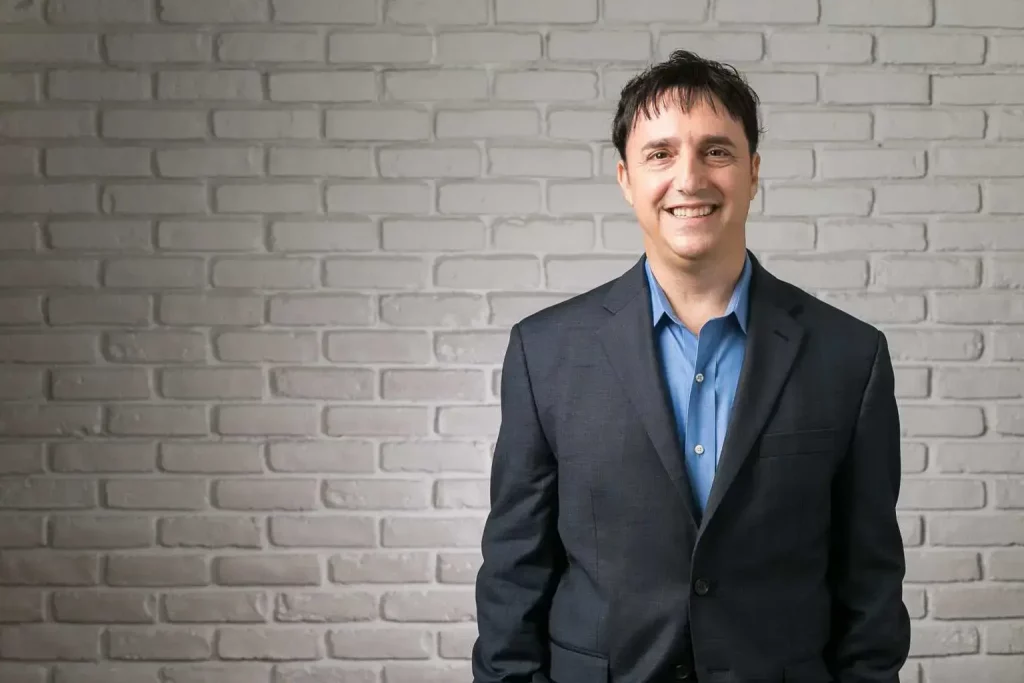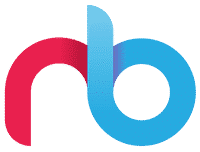
In an effort to get the big picture and grasp the true impact of the pandemic on digital marketing and communications, I got in touch with the authority in social media marketing Neal Schaffer, a world-renown digital & social media marketing consultant, speaker & author of The Age of Influence and Maximise Your Social.
I have followed Neal for many years and was delighted to have the opportunity to interview him and gather his unique insights on the steps needed to succeed in the new normal.
The discussion was both exciting and inspiring: we explored how to adopt a digital transformation, tools to be more agile, strategies to break through the noise, as well as the future of events.
Q. We know that there was already a shift to digital before COVID-19, but this has accelerated. What are some of the key megatrends that have accelerated because of the pandemic?
In the age of social distancing and contactless service, it’s become critical that every company has a digital-first approach to marketing. The main reason for this is that COVID has further changed how our customers consume content and how they research a product or company online.
In some cases, it has completely redefined the way in which we serve our customers. COVID-19 only demonstrated, once again, that companies need to pivot digitally because we, as consumers, as businesses, are consuming information digitally. So we’re ready to find several places where we can find the information we seek.
I’ve often referred to this shift as a digital transformation. While the term digital transformation was originally only applied to information technology, I’ve been calling for the same approach to sales and marketing for years. The shift was not unanticipated though. Just as we were all going into lockdown in March of 2020, I published my fourth book called “The age of influence“, a book that set out to reinvent how we view social media marketing in general. It was that book that led me on the journey to the topic of my next book, which will be a playbook for this digital-first marketing approach.
In the post-pandemic economy, there is a necessity to have a holistic view. Consumers are digital-first, even when it comes to B2B businesses. A buyer’s journey isn’t as straightforward as it used to be because the once linear purchase has become both nonlinear and sometimes completely digital.
In the post-pandemic economy, there is a necessity to have a holistic view.
Neal Schaffer Tweet
In other words, everyone is everywhere. So for businesses to take advantage, to have a digital presence and take advantage of this environment, they must have their digital bases covered.
So what does it mean to have a digital-first approach? Digital-first is, in simple terms, re-imagining your marketing with digital as your default base, but it’s more than just that. It means that you need to meet people digitally, where they are. They’re active on social media, keeping in touch and engaging with friends. They are on search engines, looking for information, and they are still going into their inbox for important personal communications, like email.
They also seek out informal communications like chatbots or instant messaging. So I simplify my view into these three buckets, which are social, search and email, and my approach in the book is all about relationships.
Social media is not a place to market to… It’s an amazing place to build relationships. It’s an amazing place to find your allies, your partners, your brand ambassadors, your fans, and there’s much more intrinsic value in leveraging that for relationship building than there is in promoting content that’s either going to be very expensive, perceived as an ad, which could cheapen your brand or get lost in the feed. But I think that same approach to social media also comes to search engines and your positioning on Google.
With email, it’s a relationship with your subscribers. And if you look at everything, even though it’s digital, if you look at things from an analogue relationship perspective, I think you reap the biggest benefits out of a digital-first strategy. It’s a counterintuitive way of thinking about it, but that is my conclusion, and these are the things I’ve been working on with my clients since the beginning of the pandemic.
Digital-first is, in simple terms, re-imagining your marketing with digital as your default base... It means that you need to meet people digitally, where they are.
Neal Schaffer Tweet
Q. So if I am an organization looking to implement a digital-first approach, where do I start? What are the first steps towards a digital transformation?
First and foremost, you must answer these questions: What is your corporate strategy? What are you trying to achieve? What are the objectives for your organization, your department?
That’s always the starting point. And once you have that, you then begin to see what a digitally transformed organization would look like and what are the gaps.
One of the biggest gaps is content. What are you going to talk about?
Content is central, it’s the currency of digital media. Every brand needs to become the media, and we’ve been saying this for more than a decade now, but now it really is true. In today’s society, you have to have a position, you have to have a perspective on things. We know that the younger generation seeks to align their values with the values of the brands that they engage with.
Having that well thought out in advance and infusing your content with that approach at every moment is what makes your brand more memorable, more sticky, to really build more emotion. Whether it’s in a blog or a newsletter or on social media, you first need to go through some soul searching and then apply it to your strategy, apply it to the digital channels that you own, and really start from there.
Q. What are some of the strategies or tools that can help a communications team or marketing team to be more agile? What are some strategies you can recommend?
Work-from-home obviously is the biggest thing that companies have had to react to. If we can work from home and we can work remotely and have a remote organization, what’s stopping us from tapping into the best talent around the world? I think that is the biggest game-changer: the smart companies are realizing that they don’t need to be limited physically to being in the same office, they can really find that talent throughout the world, add them to their team, hire people for different projects… So that to me is the biggest way that organizations can be agile, I think it allows you to be very dynamic and allows you to be very project-based.
When we have a project where we want to engage with a very, very young demographic, we might not have the skill set to be creating Tik Tok videos, so let’s bring in that talent. This sort of thing now can be on a global basis, not just a local basis. This ability to quickly adapt to each channel is an approach that every organization should be taking advantage of.
The other one, to be agile, is engaging with influencers. Now I’m not talking about the Kardashians. I’m talking about people that are building communities around their passion. Leveraging the voice of other people, not just your voice, is always going to be more trustworthy.
The great thing is that if you don’t have the capabilities to be doing these things, there are people out there that already do, and they may have already built the community that you want to tap into. And that’s where influencer relations is another way of remaining agile.
We tend to look at influencers only for content amplification. I believe influencers for content creation might be even more valuable. When I wrote my book on influencer marketing, I teased the idea and it was included, but I think over the last year and a half it’s become even more important, especially when you can’t go into the studio to do shoots. Being able to source that content has been a boon for a lot of companies.
Leveraging the voice of other people, not just your voice, is always going to be more trustworthy.
Neal Schaffer Tweet
One of the comments from my recent survey of marketing & communications leaders is that there’s a tsunami of information online. What are some of the key strategies you recommend to break through the noise?
Let’s break it down.
On social we see a lot of brands that will create their own private Facebook groups and often those work well with influencers/VIP/brand ambassadors. Those are tried and tested ways of doing it. I think more than 50% of B2B brands actually have, or plan on building, a community this year.
I use a platform called circle.so, which is becoming very popular because people don’t always want to be in a Facebook group, so it allows you to have conversations on another site, and it’s a very eloquent tool that any organization can use.
There is also Slack and numerous other tools to build communities online. Community is huge and will become even bigger, especially as you align your values with those of your users and customers in the public, it only makes more sense you would have that sort of a community.
Recently in a podcast interview, I interviewed one of the most influential transgender surgeons here in the United States. He’s a hero to many in that transgender community, and he is building upon a movement.
I see a lot of brands and nonprofits in the exact same way: you could be building a community around a movement, around the solution that you offer or the problem that you’re trying to solve. I would encourage more brands to try to do that.
Another trend we’ve seen is a trend back to old-school digital marketing, such as SEO or email.
Email marketing is one of the few ways you can really build relationships digitally. That’s where you need to have some sort of lead magnet, some way of getting them to sign up, to be on your list, like signing up to an event, becoming a member of your community, or downloading a free guide or resource.
To me, it all works in parallel and that’s what the digital-first approach looks like. Because if you don’t align all your assets, if you’re not being found in search, you’re invisible to a whole group of people when they’re online digitally. If they’re not reading your emails, you have another issue there… Digital is everywhere.
Community is huge and will become even bigger... You could be building a community around a movement, around the solution that you offer or the problem that you're trying to solve.
Neal Schaffer Tweet
One of the issues as well is that hybrid events represent a new challenge. How do you maximise both physical with virtual approaches?
My brother is a winemaker in Santa Barbara County, California, and virtual wine tastings have become one of their most popular virtual activities for team building. So there are ways of doing it. It’s not just about Zoom, but trying to do something interactive. You can also do interactive games so there are numerous ways around it.
At the end of the day, we’re never going to be a hundred percent virtual. But I also think that some aspects of this are not going away, the virtual activities will continue. Whether it’s a hundred percent or 20% or 40%, I’m not sure. But I think that this is a new reality that we all need to get used to, embrace and find ways to engage.
When you think of external events, the key is to put the public first. It’s a very, very simple way of thinking about things, but it really does root you if you ask: “Is this going to be of value to my audience? Is this something they will want to participate in? Is it something that would really engage them?”
When you take that approach, you end up being more successful in everything.
For more from Neal Schaffer, including his helpful podcasts and insightful books, visit nealschaffer.com.
Latest blog posts

Comms Strategies To Survive Aid Cuts
With reduced budgets and increased competition, here are the strategies that comms professionals need to adopt.

How do we learn from failure? Five Lessons For Comms Professionals
Our greatest professional growth often comes from our biggest mistakes. Here are five lessons I’ve learned about the power of failure.

Top 5 Communications Trends in 2025
Ready for 2025? These top five emerging communications trends will help you break through the noise.

